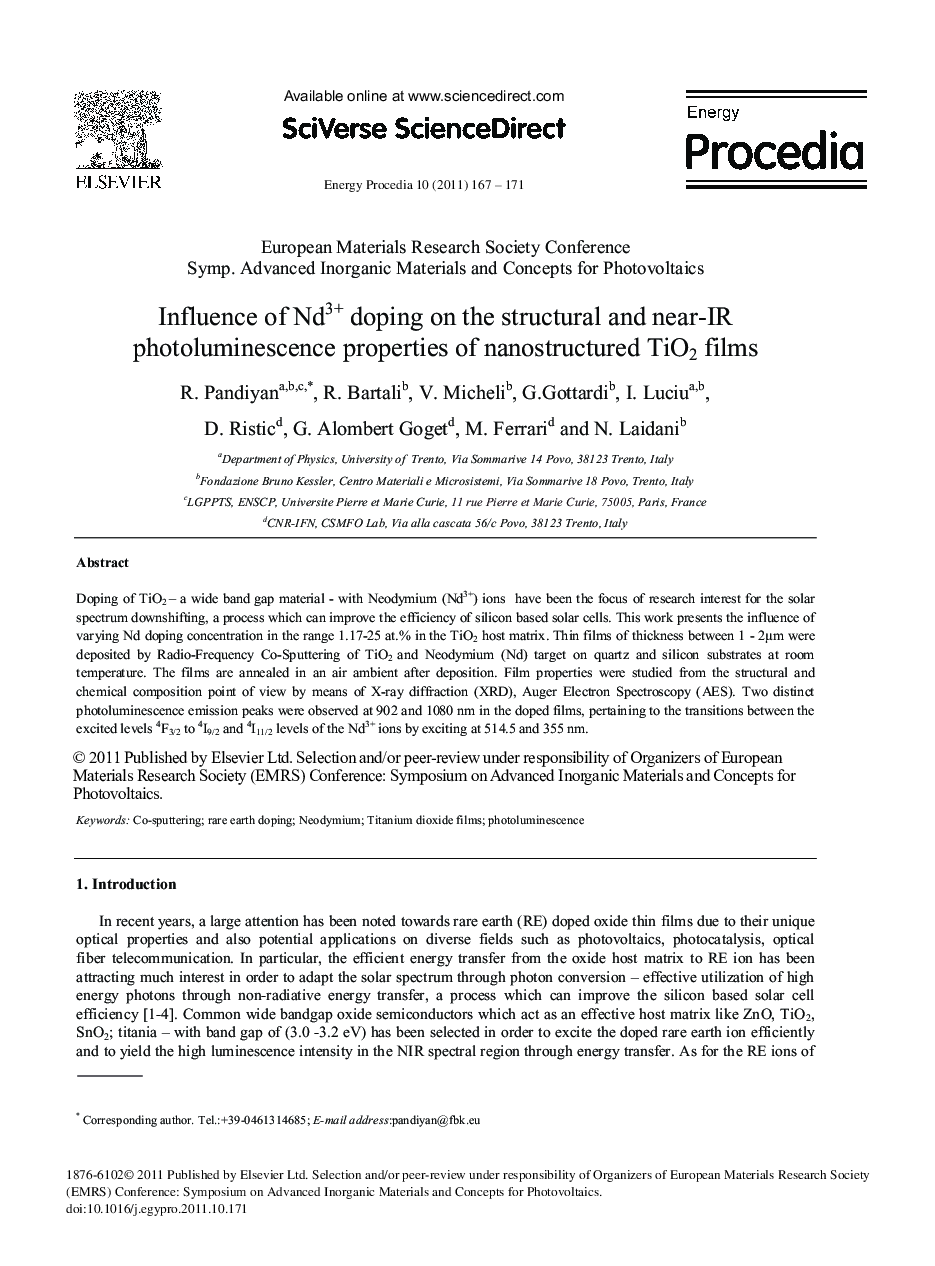| Article ID | Journal | Published Year | Pages | File Type |
|---|---|---|---|---|
| 1514229 | Energy Procedia | 2011 | 5 Pages |
Abstract
Doping of TiO2 - a wide band gap material - with Neodymium (Nd3+) ions have been the focus of research interest for the solar spectrum downshifting, a process which can improve the efficiency of silicon based solar cells. This work presents the influence of varying Nd doping concentration in the range 1.17-25 at.% in the TiO2 host matrix. Thin films of thickness between 1 - 2 μm were deposited by Radio-Frequency Co-Sputtering of TiO2 and Neodymium (Nd) target on quartz and silicon substrates at room temperature. The films are annealed in an air ambient after deposition. Film properties were studied from the structural and chemical composition point of view by means of X-ray diffraction (XRD), Auger Electron Spectroscopy (AES). Two distinct photoluminescence emission peaks were observed at 902 and 1080 nm in the doped films, pertaining to the transitions between the excited levels 4F3/2 to 4I9/2 and 4I11/2 levels of the Nd3+ ions by exciting at 514.5 and 355 nm.
Related Topics
Physical Sciences and Engineering
Energy
Energy (General)
Authors
R. Pandiyan, R. Bartali, V. Micheli, G. Gottardi, I. Luciu, D. Ristic, G. Alombert Goget, M. Ferrari, N. Laidani,
